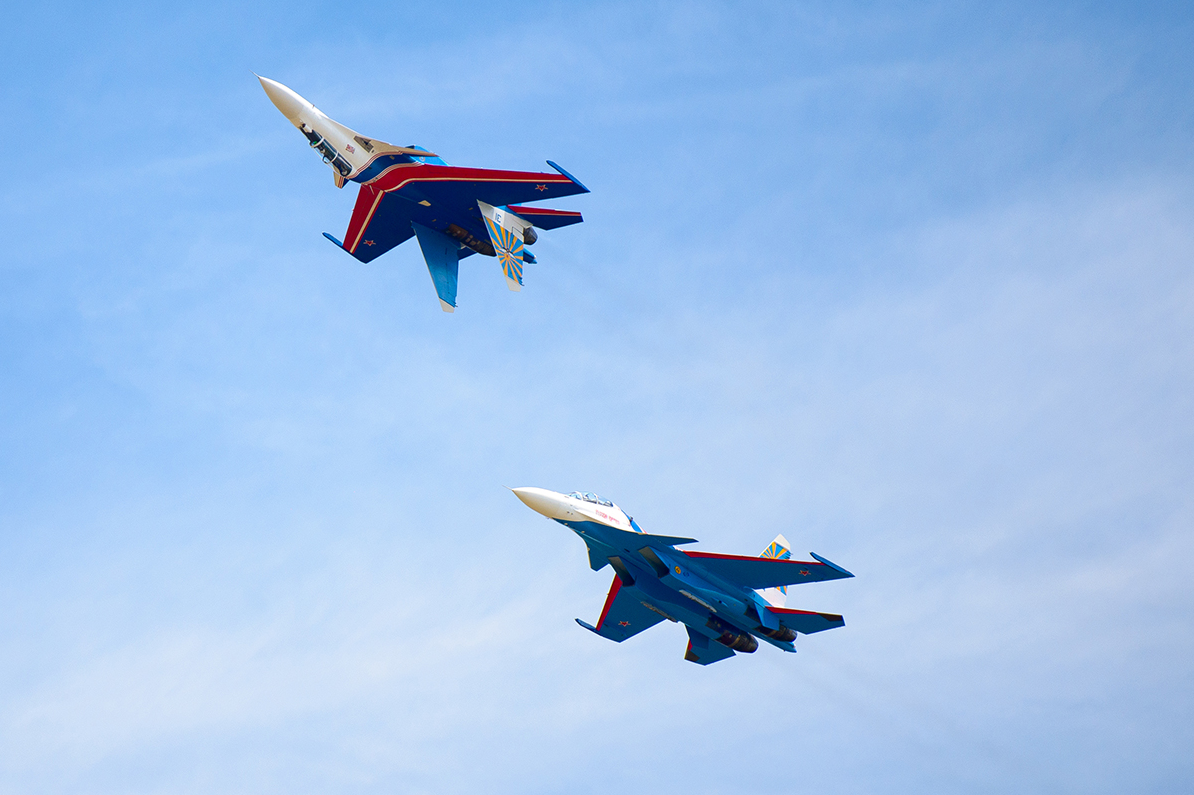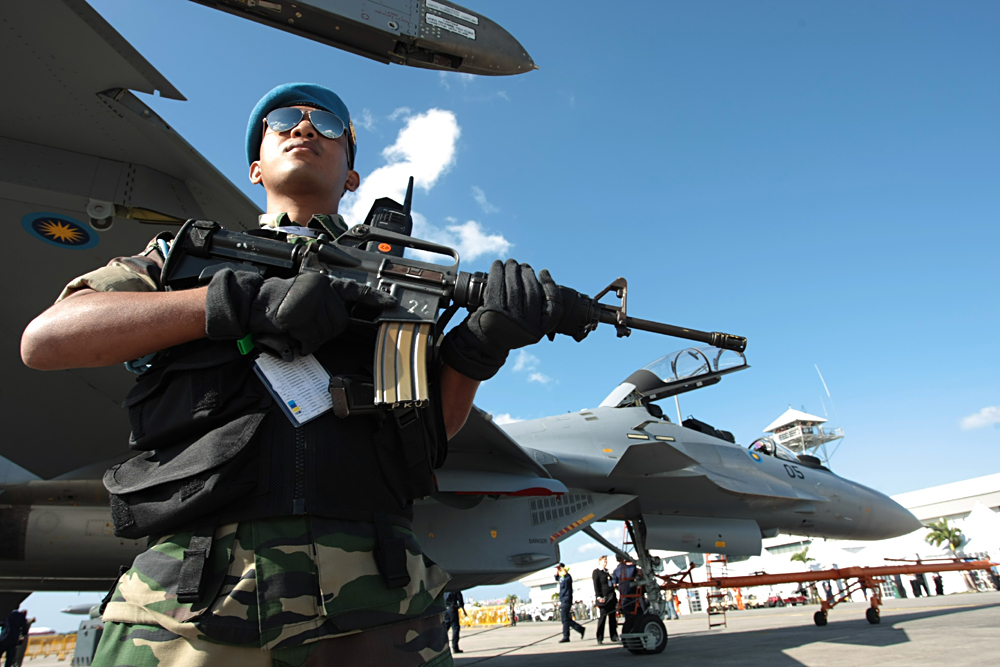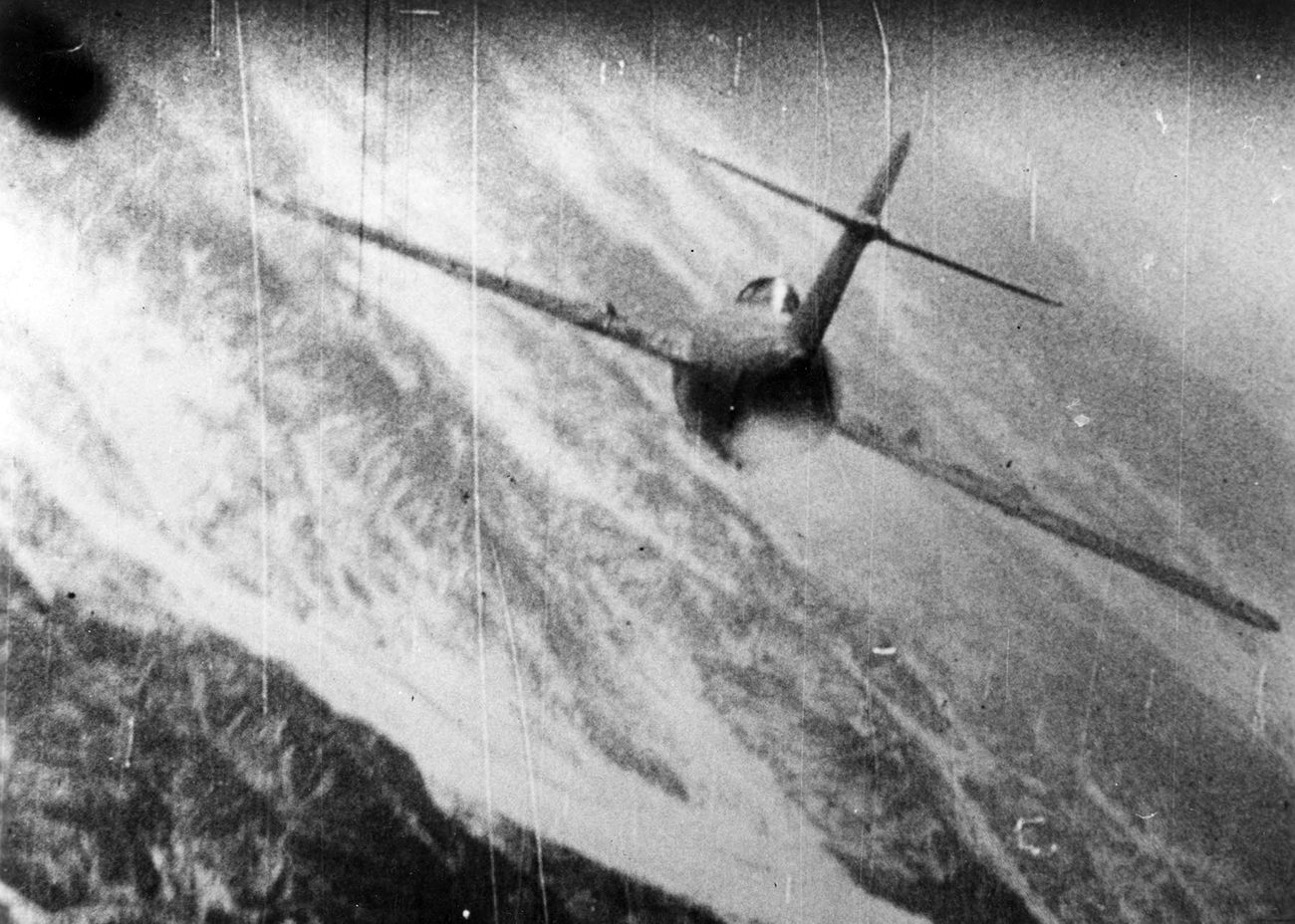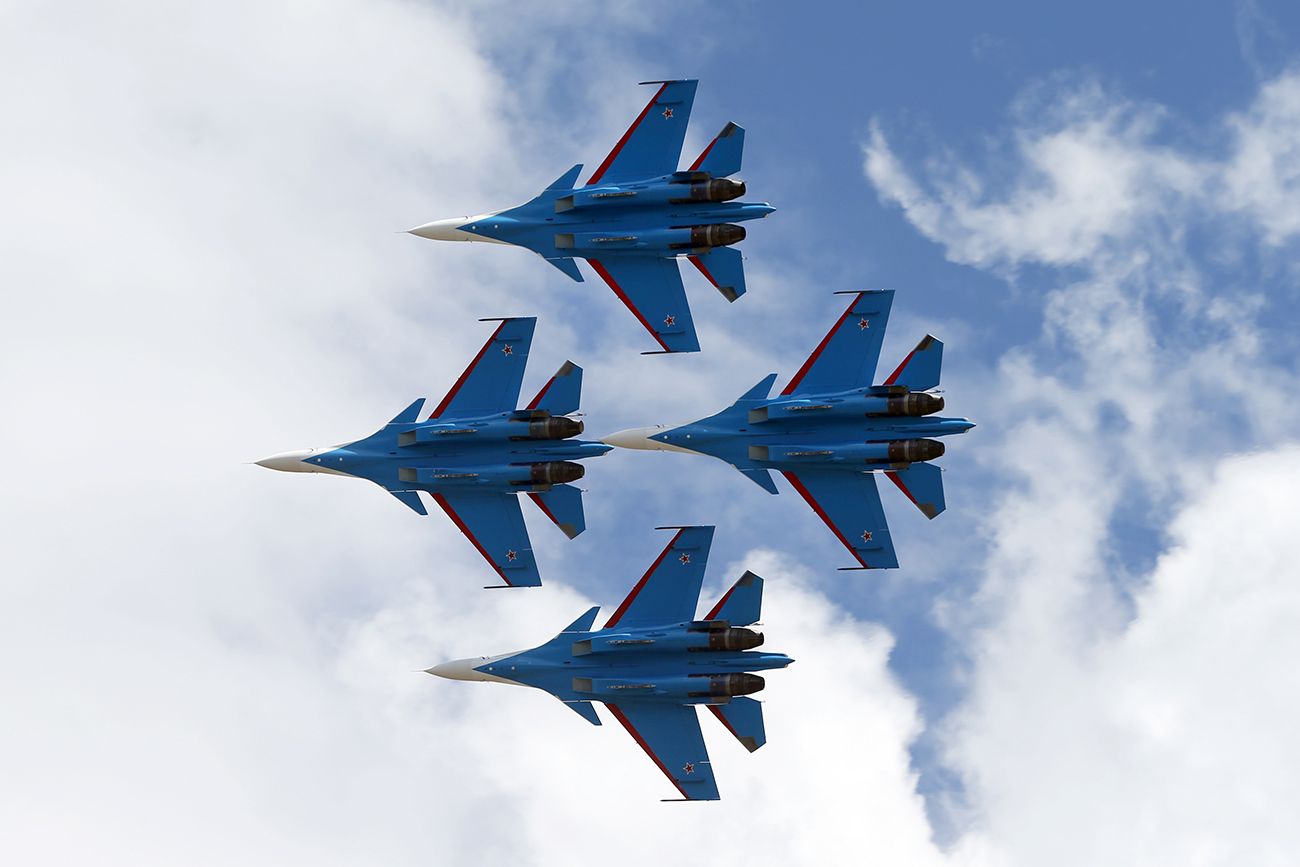How Malaysia can keep its MiGs and save billions
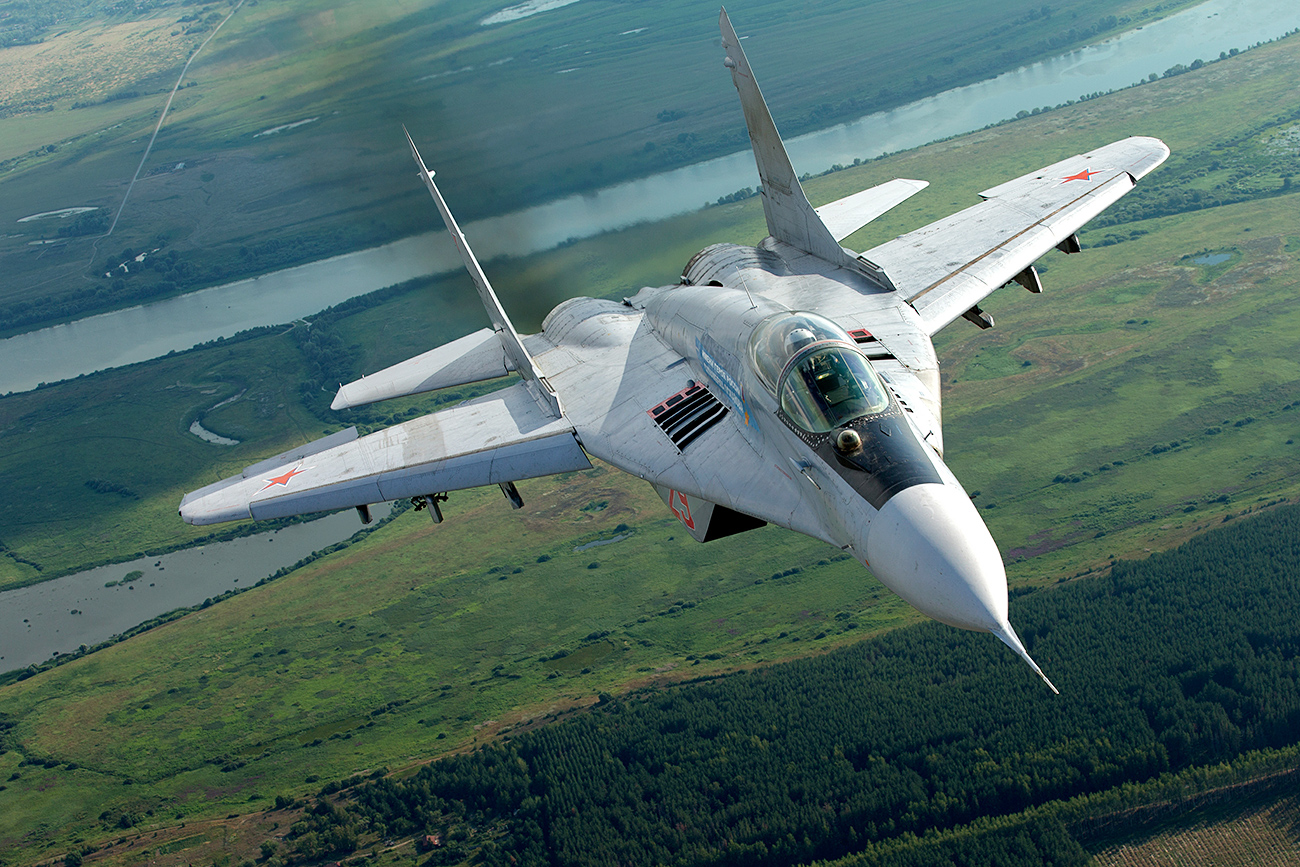
More than 30 nations either operate or have operated the MiG-29
Vadim Savitsky/Global Look PressMalaysia is looking for a replacement for its twenty-two year old MiG-29 fleet. France wants to sell its Rafale medium fighter to the Royal Malaysian Air Force (RMAF). Having tasted success in the Malaysian market by bagging an order for four A400M military transport aircraft and two Scorpene submarines, France believes it is on a roll. No less than French President Francois Hollande landed in Kuala Lumpur in March 2017, offering industrial and credit inducements to get the Malaysians to pick the Rafale as the winner in its Multi-Role Combat Aircraft (MRCA) competition.
However, the Malaysians don’t seem to be in a big rush to order, especially at time when there’s a fighter glut globally. According to RMAF chief Tan Sri Roslan, Malaysia will take an informed decision after evaluating several types of fighter aircraft. “We are now in the final stages of studying which of the companies are able to meet with our requirements and the decision to be made is not for a short term,” he says.
Prime Minister Datuk Seri Najib Razak agrees: “Although Malaysia is not ready yet, it will take note of the aircraft's success in several countries. We will take note of the possibility of that particular aircraft being the subject of cooperation and collaboration in those countries as well.”
Rafale: Costliest fighter on Earth
At approximately $300 million per fighter, the Rafale will blow a hole the size of France in the Malaysian defense budget. Last year the Indian government after haggling with the manufacturer, Dassault, for four long years, brought down the price to $220 million. Malaysia doesn’t have India’s clout nor can it match the Indian order of 36 aircraft. The RMAF will buy only 18 jets – enough to replace its MiG-29 fleet. Kuala Lumpur could therefore end up paying closer to $300 million for each Rafale.
That’s plane insanity. Fifth generation stealth jets like Russia’s PAK-FA and the American F-35 cost less than the Rafale. Malaysia may be an economic tiger but it doesn’t have that kind of cash to throw around. Countries like Malaysia with limited defense needs – and budgets – need a no-frills, honest fighter that will do the job of patrolling the country’s airspace without too much fuss.
It is understandable that Malaysia would want to diversify its air force, but that is not a reason to splurge when cheaper and more effective alternatives are available.
MiG-35: Six for the price of a Rafale
Compared to the almost gold-plated Rafale, the Russian MiG-35 is a bargain at approximately $50 million. The MiG-35 is a multi-role aircraft that can not only provide cover for ground troops by establishing air dominance, but also attack ground targets with a vast array of weapons.
While some say it is a MiG-29 in new garb, in reality the MiG-35 is a vastly improved aircraft that’s 30 percent larger and is classified as a 4++ generation jet fighter. The Russian Air Force and Egypt have placed larger orders for the MiG-35 and next in line is Serbia.
Sukhois: Tried and tested
If Malaysia wants air dominance but has no more faith in the MiG-29, then the Su-30MKM is a tried and tested option with a fearsome reputation. It is the most potent 4.5 Generation fighter in the world and could even take on the latest American stealth jets.
The Su-30MKM, which the RMAF operates, costs only marginally more at $65 million per aircraft. To be sure, the Sukhoi belongs to an entirely different class of heavy aircraft that is costlier to operate and own than the lighter the MiG-29. But the RMAF does very limited flying (we’ll come to that in the next section) so deploying the Sukhoi instead of the MiG won’t add significantly to operational costs.
What’s more, the Su-30MKM can be upgraded with some stealth features so if the RMAF decides to upgrade to Russia’s PAK-FA, the transition to stealth platforms would be smooth. Malaysia’s hopes of obtaining stealth aircraft from the U.S. are next to zero. The Korean stealth program is heavily dependent on American technology and security clearances. By expanding its Su-30MKM program, the RMAF will be well prepared for the rapidly evolving nature of air combat.
MiG-29 upgrade
The most sensible option for Malaysia is to upgrade its existing MiG-29. Currently, half of the RMAF’s 18 MiGs are grounded, but Malaysia may have acted in haste by calling for their replacement. In comparison, India – the first export customer of the MiG-29 – has been flying the same aircraft a lot longer without permanently grounding any aircraft.
In fact, the Malaysian MiGs have a lot of life left in them. According to Defense News, the current airframe life of the MiG-29 is pegged at 4000 flight hours, although the highest number of hours logged by any Malaysian MiG is just 1800 hours in 20 years of service. This clearly shows the RMAF trains an extremely limited number of hours.
Two years ago Malaysia's Aerospace Technology Systems Corp (ATSC) had launched a bid to upgrade the MiG-29s for a fraction of the cost of a new fighter. Company CEO Mohammad Fadzar Suhada said the program was launched in conjunction with Russia’s MiG Corporation and the RMAF was in favor of it.
According to Suhada, the ATSC’s program was similar to the MiG-29 upgrade being undertaken by India and was therefore a proven blueprint. “It is not an interim solution until MRCA comes along,” he said. “It is a medium- to long-term solution for Malaysia's fighter requirement.”
Russian support
Even as the MRCA competition continues, the Russian side continues to be hopeful. Says Victor Chernov, Deputy Director General for marketing and sales at MiG Corporation: “Implementation of the project for modernization of MiG-29 aircraft will allow the RMAF to extend the life of the aircraft systems and make them more effective.”
First up, the structural upgrade will increase the life of the airframe to 6,000 hours. The upgrade will equip the MiG-29 with air-to-ground capability, which Malaysia will find handy while dealing with insurgents. Larger fuel tanks will increase operational range by 30 per cent.
Interestingly, ATSC was formed in 1994 as part of Malaysia's original purchase of the MiG-29, with 70 per cent of the equity owned by Malaysia and 30 per cent by Russian stakeholders. It was originally set up to support the MiGs and today also provides support for the RMAF's Sukhoi fleet.
Unlike the Rafale, which will contribute nothing to the Malaysian economy, the MiG-29 upgrade program will not only save billions of dollars but also help Malaysians gain considerable technical experience.
Servicing and support
As a large operator of Russian aircraft, India plays a key role in helping the RMAF maintain its Su-30MKM fleet. While Sukhoi supplies the major components, the aircraft’s canards, stabilizers and fins are manufactured by India’s Hindustan Aeronautics Limited.
In 2008 India accepted Malaysia’s request to train RMAF personnel on the operation and maintenance of its Sukhoi fighters. Subsequently, a composite team of flying and technical training instructors was deployed at Gong Kedah Base as part of the Indian Air Force Training Team.
Support from India has been possible with Russian permission. But will France allow third-party support? Since the Rafale is not yet inducted in India and the first jets are likely only in 2019, India won't master Rafale support at least for another decade. So the Indian Air Force may not be able to service Malaysian Rafales even if France is okay with it.
The RMAF’s dalliance with hyper expensive French and British aircraft needs to be seen in the backdrop of Malaysia cutting its defense budget by 12.7 per cent to $3.41 billion in 2017, as the country grapples with growing public discontent over rising living costs. If sound economics were a factor in Malaysia’s defense procurement, the Rafale would have crash-landed a long time ago.
Rakesh Krishnan Simha is a New Zealand-based journalist and foreign affairs analyst, with a special interest in defence and military history. He is on the advisory board of Modern Diplomacy, a Europe-based foreign affairs portal. He tweets at @byrakeshsimha. The views expressed here are the author’s own and do not necessarily reflect those of RBTH.
If using any of Russia Beyond's content, partly or in full, always provide an active hyperlink to the original material.
Subscribe
to our newsletter!
Get the week's best stories straight to your inbox
